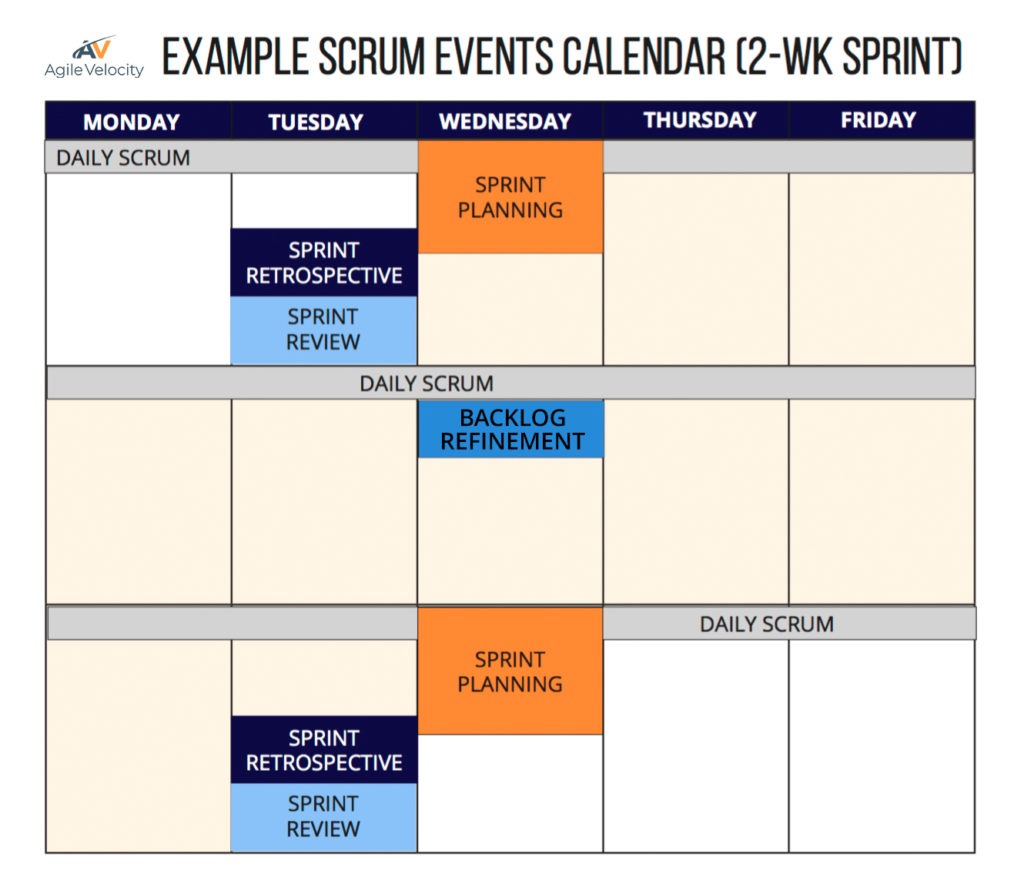This is the second half of our short series on Scrum events. Check out the first post explaining the necessity of Scrum events, including the impact if they were not to occur.
We get a lot of questions on when Scrum events should happen. While there is no one-size-fits-all, the following is my advice.
Starting Sprints
First I recommend 14 calendar-day Sprints, not 10 business-day Sprints. That is, you always want your Sprint starting on the same day of the week with a consistent cadence. If you do 10 business days, you will always be shifting the start day due to holidays. For example say you plan a Sprint starting on Monday and the Memorial Day Holiday comes up so the next Sprint starts on Tuesday and then July 4th happens and you shift to Wednesday and then Labor Day, you get the point.
If you start on Wednesday you can always start every other Wednesday and it becomes consistent and dependable. Your team always knows every other Wednesday is planning day and your stakeholders know every other Tuesday is Review.
We also recommend you do not start or end Sprints on Mondays or Fridays. We tend to have lots of people out on those days due to holidays or vacations. Avoid planning main meetings on those days. Therefore, I recommend Sprints start on Wednesdays or Thursdays, which means you will end Sprints on Tuesdays or Wednesdays.
Sprint Review & Sprint Retrospective
Most teams like to end a day with Sprint Review and Retrospective and then start the next day with Sprint Planning. Others like to have one whole day of meetings. They will end the Sprint with Review and Retro in the morning and start the next Sprint after lunch with Sprint Planning. Note there are no gap days between the end of a Sprint and the start of the next.
Recommended Scrum Events Calendar (2-wk Sprint)
The calendar below shows a typical Sprint schedule for a 2-week Sprint.

- A 4-hour time block for Sprint Planning Wednesday morning.
- A 15-minute Daily Scrum time block every day. Most teams do their Daily Scrum in the morning but it could happen at any point of the day as long as it is consistent. Some do it after lunch, others at the end of the day.
- On the last day of the Sprint, you would have a 90-minute time block for Sprint Retrospective followed by 60 minutes for Sprint Review.
- The order of Retro and Review can be swapped, but I like to do Retro before Review so that the team can share with stakeholders what they are learning and their planned improvements for the next Sprint. They can also discuss what support they need. The downside is if the Review doesn’t go well they might have to have a mini-Retro on the Review to implement improvements for the next time.
- I like to schedule Backlog Grooming in the middle of the Sprint. I typically timebox this for 1h 45m right after the Daily Scrum. The middle of the Sprint is a little bit of a lull, avoiding the rush of the beginning and end of the Sprint. It also allows the Product Owner a few days to get answers to questions before the next Sprint. It also allows the team ample time to do any prep required in order to start work the following week. This makes for a weekly cadence of either Sprint Planning or Grooming on Wednesday mornings.




